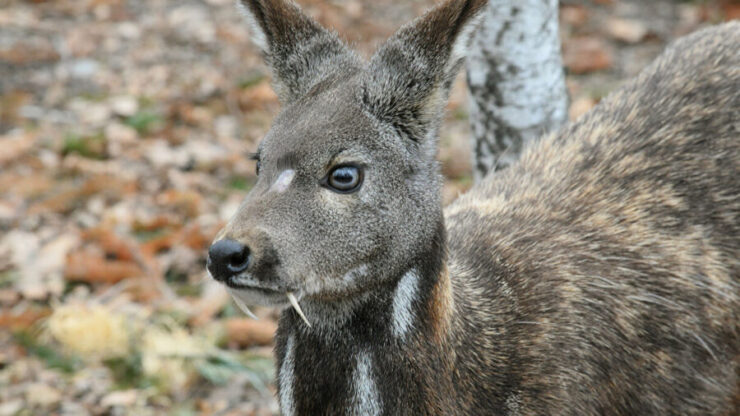Distinguishing Features – The Siberian musk deer is a small member of the deer family; it weighs 7 – 17 kg (15 – 38 lb). The male has canine teeth which grow to a length of 8 cm (3″) and project well below the lips.
Habitat
The Siberian musk deer prefers forest and brushland at altitudes of 2600 – 3600 m; found in Siberia, Mongolia, northeast China, North Korea, South Korea and Sakhalin Island.
Diet

A variety of vegetation, such as leaves, flowers, young shoots and grasses. It also eats twigs, mosses and lichens, especially in winter.
Notes
Musk deer are strongly territorial. Within its home range, it regularly uses well-established trails connecting areas used for feeding, hiding and other activities. Males scent mark their territories by rubbing their tail gland against trees and stones.
The substance obtained from the male’s musk gland is used in the manufacture of perfume and soap and, in the Far East, for a variety of medicinal purposes.
Overhunting of males for musk is a major factor in the Siberian musk deer’s decline. In addition, females and males too young to produce musk (less than 3 years old) are captured in traps set for males. Loss of its forest habitat is also a factor.

